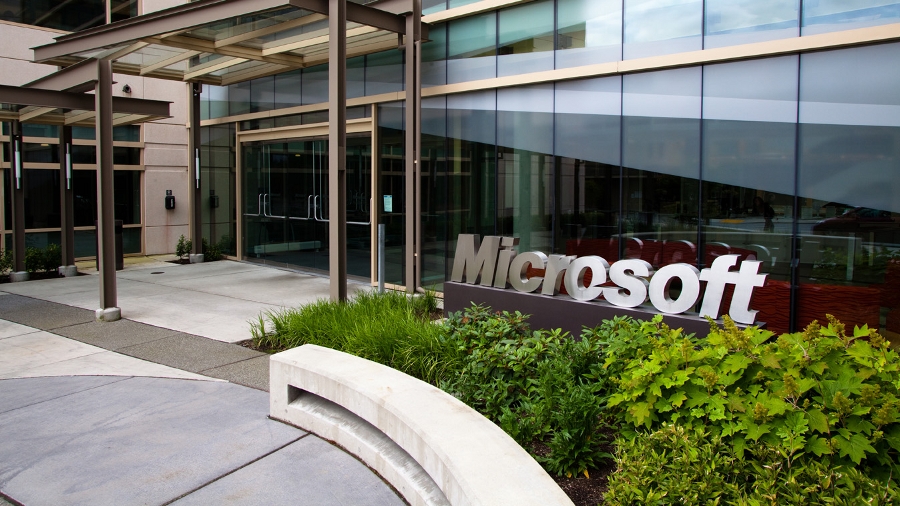Windows Server 2016 brings all the benefits of the cloud to your own servers
All the power of the cloud, none of the drama

If you're looking at the way Windows Server 2016 focuses on containers and Docker and worrying that it's going to be better designed for running Azure than for the servers in your office or the virtual machines you use on AWS, lead architect for Windows Server Jeffrey Snover suggests thinking about it the other way round.
"We're starting from the premise that the cloud is not a place; it's a model. We want to be able to provide that model to customers anywhere they are. We want to be able to provide it in the public cloud, through trusted hosters or allow them to run that model on premises." That way, says Snover, you don't have to worry about getting stuck with the first cloud you choose.

Drop the drama
But it also brings the strengths of the cloud to systems that you run yourself. "We're taking the public cloud patterns and practices and making them available everywhere, and the first one is 'no drama'," he explains. "I can promise you it is not the case that when something goes wrong in Azure that someone is running around going 'oh no, a disk died!' We have a pattern to eliminate the drama from operations."
The first part of that is making Windows Server a better server OS. "That's things like Nano Server, containers, Desired State Configuration, package management and a new installer – Windows Server Installer. We made it a nice, small, agile, manageable OS that fits well into a devops environment. You can create a great cloud app running in Azure or AWS or anywhere you want."
The second part is using Windows Server to run the fabric of your data centre, by improving how it handles storage, networking and compute. "In compute we have Nano Server and containers, and there are improvements in both of those in TP4 [Technical Preview 4 of Windows Server]. With the new Hyper-V containers, each container gets its own implementation of the kernel and that gives you significantly more isolation."
That's key if you're running a cloud service like Azure and you let people run their own code. "Windows Server containers work great in a trusted multi-tenancy environment. Hyper-V containers are for when you have a hostile multi-tenancy environment. The customer could be Dr Evil and sends us evil code," Snover points out.
But it's also useful as developers increasingly use software components and libraries to build their apps. "A lot of what's done today is combining software components that people don't really know, that they didn't write. The flow of security fixes through the open source community is not particularly good and the ramification is that your applications are based on components that you might not trust, so you might want to put those in Hyper-V containers as well."
Sign up to the TechRadar Pro newsletter to get all the top news, opinion, features and guidance your business needs to succeed!
Smoothing out
Nano Server is much easier to work with in this preview, with more PowerShell commands, the Remote Server Management Toolkit that replaces tools like Server Manager, and support for Desired State Configuration and PowerShell package management. "TP3 gave people a feel for Nano Server, but it had quite a few rough edges – you're seeing those rough edges being rounded off in TP4."
For storage and networking, Windows Server uses designs from Azure. "Across the entire storage stack we've made great advances – parallel deduplication, diagnostics, quality of storage – but the big news is Storage Spaces Direct. This uses fast NVMe and SATA SSDs to dramatically lower the cost while increasing the reliability and the performance." That uses the design from Azure Storage, but Snover explains "we had to re-implement portions of it so it will work on the smaller footprints that customers will want."
"In the networking stack, we literally took code running in Azure and that's the code we're shipping to our customers, so this will be unlike any version one ever. In the past, when we had version one of something we would do a lot of testing on it with customers to make sure it was really rock solid. This time our version one is going to have literally millions or perhaps even tens of millions of hours of production use on it and that's the code we're delivering to customers."
Mary (Twitter, Google+, website) started her career at Future Publishing, saw the AOL meltdown first hand the first time around when she ran the AOL UK computing channel, and she's been a freelance tech writer for over a decade. She's used every version of Windows and Office released, and every smartphone too, but she's still looking for the perfect tablet. Yes, she really does have USB earrings.